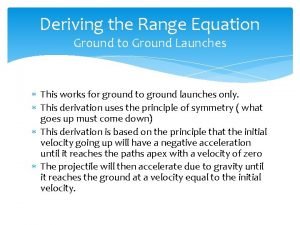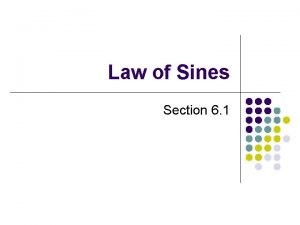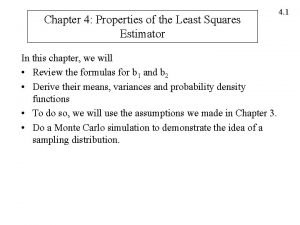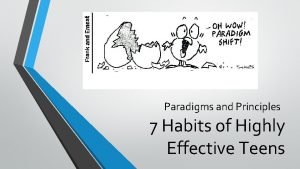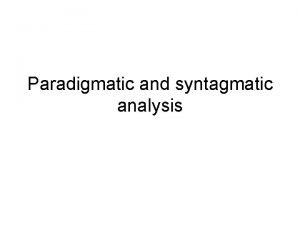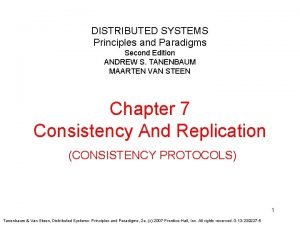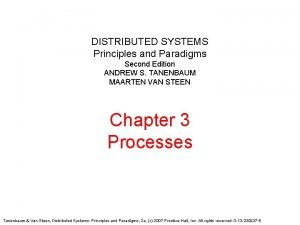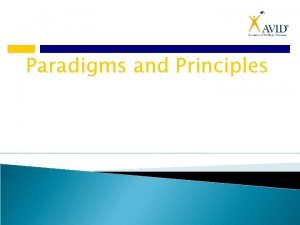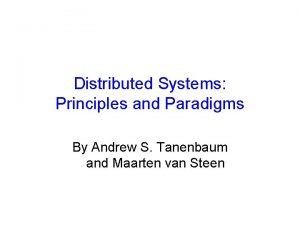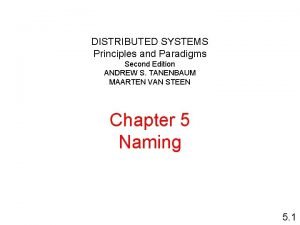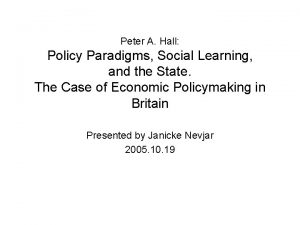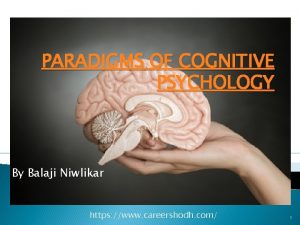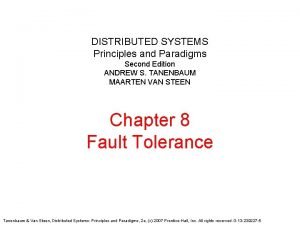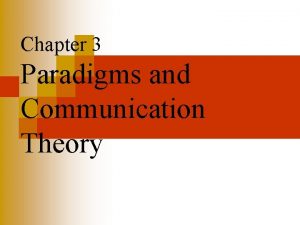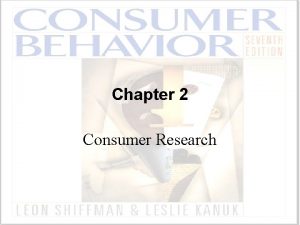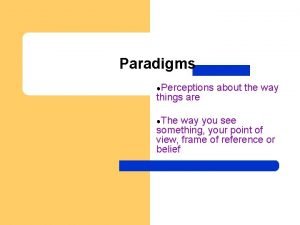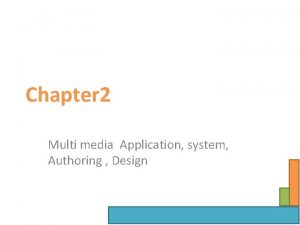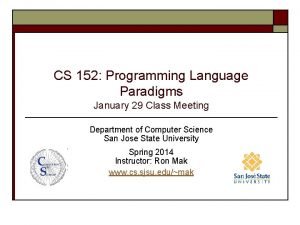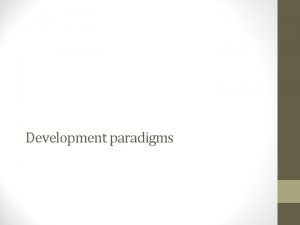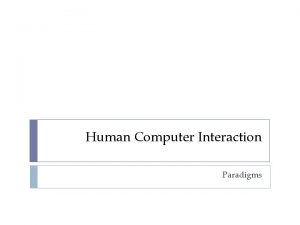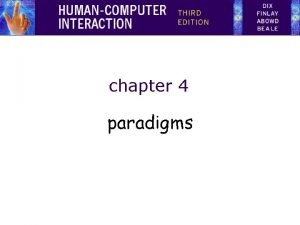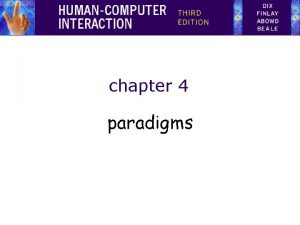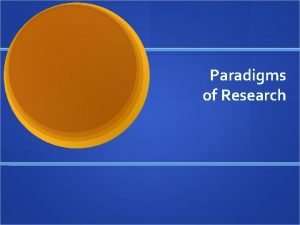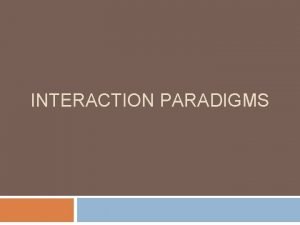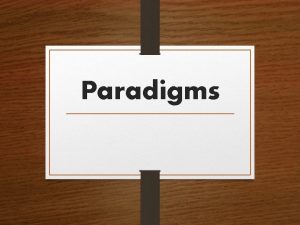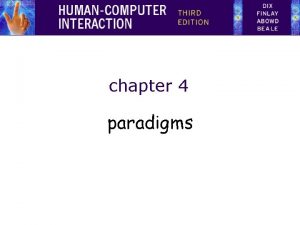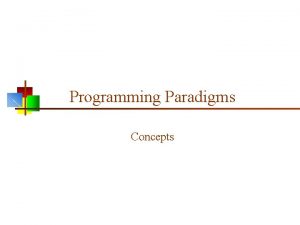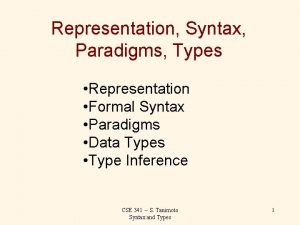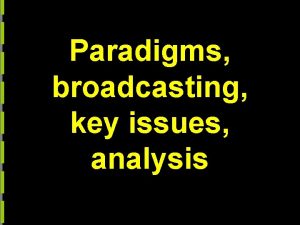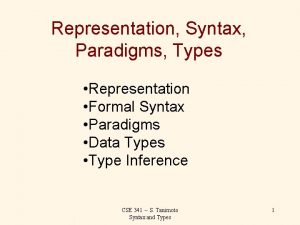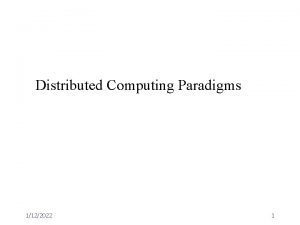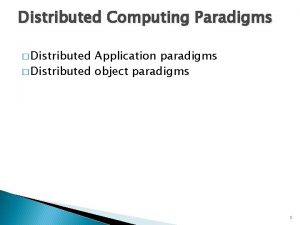Computer Science and Social Science Paradigms for deriving




































































- Slides: 68

Computer Science and Social Science • Paradigms for deriving insights from data

Big data and the social sciences

There has been a fundamental shift in the opportunities in data collection about humans.

Our digital breadcrumbs… • • E-mail Twitter Instant messaging Text messaging Call data records (from cell phones) Link structure among websites (google algorithm) Google searches What can data like these tell us?

Phones • Mapping societies (Onnela et al PNAS 2007) • Identifying relationships (Eagle et al PNAS 2009) • Identifying behavioral change associated with the flu (Madan et al Ubicomp 2010) • Emergency-related behaviors (Altshuler et al 2013 Jnl Stat Physics; Margolin et al ICWSM 2013) • Macro-economic change (Toole et al 2015)

Social Media • Real time tracking of opinions during debates (Lin et al WWW 2013) • Studying dynamics of competing hashtags on Twitter (Lin et al ICWSM 2013) • Studying unstructured text to detect “invisible” networks (JAIST 2015) • Detecting political spin (Tsur et al ACL 2015)

Internet as experimental platform • Online field experiments with Members of Congress (various papers with Neblo, Esterling and others in APSR, POQ, PNAS etc) • Experimenting with personalization with Google, Travelocity, etc • Volunteer. Science. com

There has been a fundamental shift in the opportunities in data collection about humans. But: the social sciences have been slow in getting on the boat

We need a new synthesis

Computer Science Create features from large, messy data Apply algorithms, iterate to best parameters Evaluate fit

Social Science Collect ‘small’ datasets Apply social theory and inferential statistics Evaluate fit

Computational Social Science Make population-level inferences Apply models, iterate to best parameters Create features using social theory Search for representative data hidden in big data

Social science issues • Static • Small scale, not system level • Decontextualizes behavior re social networks/time/space • Little emphasis on prediction (and often does badly) • (Largely) ignores vast majority of existing data on humans

Computer science issues • Often ignores “validity” issues re data • Underemphasis on curation of data/producing powerful subsamples • Emphasis on prediction over interpretability • Ignores emergent social part of sociotechnical systems • Ignores algorithmic biases


Google flu trends

Google flu trends • Examine 50 m search terms • Which ones are most heavily correlated with flu prevalence, as measured by CDC regional data?



Why did google flu miss? Big data hubris. And it was the algorithm’s fault.

Big data hubris


The hubris • Google flu is promoted as more up to date than CDC data • The search terms were identified through brute force “what correlates with CDC data” (50 m search terms against 1152 data points) initially leading to some spurious relationships, and then changed once (and then again in Oct 2013)

Overfitting (in 2008 paper)…

The hubris • Google flu is promoted as more up to date than CDC data • The search terms were identified through brute force “what correlates with CDC data” (50 m search terms against 1152 data points) initially leading to some spurious relationships, and then changed once (and then again in Oct 2013) • But lagged model based on t-3 does better than Google flu

Modified model… • GFT + lagged CDC (t-2) + correction for previous miss by GFT


The algorithm





Trends: abdominal pain on my right side

Getting Google Flu’s Search Terms • Google Correlate has a link labeled “…match the pattern of actual flu activity (this is how we built Google Flu!)” • We conducted four Google Correlate searches based on the following time-series: – The CDC % ILI data from 2003 to present. – The CDC % ILI data from 2003 to 2009 (the training period for Google Flu). – The actual Google Flu national time-series. – The Google Flu national time-series post-2010 (when it went off the rails).

Search Prevalence (Top 50 From Google Correlate) For Google Flu and CDC Time Series GFT is heavily tilted toward remedies

Catching the Google flu: lessons learned • Signals from sociotechnical systems are constantly in flux, to not build that into analyses is statistical hubris. • Big data can overwhelm “small” data • Focus big data on what we don’t know (spatial granularity) • We need to understand behaviors cultivated on sociotechnical systems • The technical part of sociotechnical is worthy of study

Catching the Google flu: lessons learned • There needs to be more transparency in the methods • Big data requires multidisciplinary teams • Train computational social scientists • Develop appropriate infrastructures for 21 st century social science


Work in progress… • Using Twitter to predict polls

Twitter • The good: – Runs 24/7 – Rich source of opinions, discussion, networks • The bad: – Unrepresentative of the voting public – Bots and organizations – Skews young, urban, Democrat

Overview • Goal: a barometer of public opinion that runs in real time, provides a polling signal at fractional cost. • Challenges: validity, representativeness of the signal. • Our approach: matching, smoothing, reweighting. • Takeaways: Potential to complement traditional polls.

Matching Twitter to Voter data • Collaboration with vendor to gain access to voter records for Iowa and New Hampshire • Objective: link voter data to Twitter handles • Method: start with unique names in voter data, and link to data in Twitter accounts.

Creating Predictive Features using Tweets • Goal: create predictive features from Twitter data that are not biased vis-a-vis voters. • Challenge: registered voters are diverse, and Twitter skews young, urban, Democrat. Old, rural, and conservative voters may be sparse. • Our approach: multilevel regression with poststratification (Wang et al 2014)

Example: Clinton in IA Raw Twitter Mentions Smoothed and Weighted Twitter Mentions Note: variables are only scaled to mean zero and standard deviation 1.

Example: Trump in IA Raw Twitter Mentions Smoothed and Weighted Twitter Mentions Note: variables are only scaled to mean zero and standard deviation 1.

Predictors • Mentions in tweets • Partisanship of user * partisanship of candidate • Sentiment (using crowd-sourced dictionary) • Retweets • Prior polls (7 day lag)

Modeling • Strategy: use features created by multilevel regression with poststratification to predict polling margins. • Gradient stochastic boosting • Tried: least squares, boosted least squares, random forests, partial least squares.

Data • • • IA: 1, 212 voters NH: 382 voters Democrats-580, Republicans-514, Ind-500 Men-871, Women-708 Race: Asian-12, Black-16, Hispanic-11, White 1545

Model Performance w/o polls • Predicts ~80% of the variance out of sample • Improves error of null model by ~55%

Determining a Benchmark Model • What is the appropriate benchmark model? • Challenges: – poll aggregation produces very high day-to-day autocorrelation by design, ~98% – difficult to make improvement over short intervals • Our Approach: – Use naïve AR 1 model (w/ week-long lags) as a benchmark

Benchmark Model •

Clinton in IA: Benchmark Model

Clinton in IA: Our Model

Trump in IA: Benchmark Model

Trump in IA: Our Model

Sanders in IA: Benchmark Model

Sanders in IA: Our Model

Comparison: Our Model vs. Benchmark •

Model Performance • Reduces error of benchmark models by ~8% • Average error 3. 81 points in out of sample contest compared to 4. 14 in benchmark • Captures variance in polls without relying on prior polls. • Applications: – Fill in where polls less dense – Provide real-time complement to polls

Next Steps • Reducing sparsity: using free text mentions rather than @mentions only. • Increase sample size through more powerful matching • Better features: ensembles of sentiment • Expand to other states and national sample • Predict opinion across interesting subgroups (e. g. women, latinos). • Use same panel to predict other things

Key ingredients • Development of tiny subsample of Twitter data, but to homogeneous sample of individuals with known attributes • Develop a panel • Extract features using computational methods • Application of advanced applied stat methods from social sciences • Predictive models from machine learning methods

Mobilization ecosystem


Query name-words Names 1. No match 2. One match 3. Multiple matches Voter Profiles Twitter Profiles Locations 1. To US location 2. To foreign location 3. To unknown location Example 1: 25 K voters with unique names -2300 with one match -1300 to unknown location -474 to foreign locations -342 exact match to listed state 1. To same state 2. To other state

Multilevel Regression with Poststratification • Poststratification: multiply smoothed estimate by weights based on occurrence of each person-type in the population of interest. Unrepresentative Twitter data Urban Population weights Rural Urban Young Old Rural

Directed tweets • Democratic voters –> Democratic candidates: – 1896 • Democratic voters –> Republican candidates: – 404 • Republican voters –> Republican candidates: – 2509 • Republican voters –> Democratic candidates: – 262

Polling Data – Raw

How to aggregate the Polls? • Challenge: Polls are noisy and intermittent, with high density closer to election. • Approach: Weighted daily averages as compromise between: – recency of poll – sample size
 Paradigms for interaction
Paradigms for interaction Application of bernoulli's principle
Application of bernoulli's principle Deriving bernoulli's equation
Deriving bernoulli's equation Deriving the range equation
Deriving the range equation Deriving law of sines
Deriving law of sines Properties of least square estimator
Properties of least square estimator Braggs law definition
Braggs law definition Listening for deriving aesthetic pleasure ?
Listening for deriving aesthetic pleasure ? Deriving maxwell relations
Deriving maxwell relations Paradigm and principles
Paradigm and principles Paradigmatic and syntagmatic analysis
Paradigmatic and syntagmatic analysis Distributed systems andrew s tanenbaum
Distributed systems andrew s tanenbaum Distributed systems principles and paradigms
Distributed systems principles and paradigms Php paradigms
Php paradigms Paradigms and principles
Paradigms and principles Distributed systems principles and paradigms
Distributed systems principles and paradigms Distributed systems principles and paradigms
Distributed systems principles and paradigms Natural science and social science similarities
Natural science and social science similarities Peter hall policy paradigms
Peter hall policy paradigms Balaji psychology
Balaji psychology Message ordering paradigms
Message ordering paradigms Message passing paradigm in distributed computing
Message passing paradigm in distributed computing 3 paradigms
3 paradigms Consumer research paradigms
Consumer research paradigms Paradigms of others examples
Paradigms of others examples Binding in programming paradigms
Binding in programming paradigms Ktu programming paradigms notes
Ktu programming paradigms notes Paradigms of development communication ppt
Paradigms of development communication ppt Designer released multimedia authoring system
Designer released multimedia authoring system Quick and dirty evaluation
Quick and dirty evaluation Biological paradigm of psychopathology
Biological paradigm of psychopathology R programming language paradigms
R programming language paradigms Development paradigms
Development paradigms Social thinking and social influence in psychology
Social thinking and social influence in psychology Social thinking social influence social relations
Social thinking social influence social relations Social science vs natural science
Social science vs natural science Fspos vägledning för kontinuitetshantering
Fspos vägledning för kontinuitetshantering Typiska drag för en novell
Typiska drag för en novell Nationell inriktning för artificiell intelligens
Nationell inriktning för artificiell intelligens Returpilarna
Returpilarna Varför kallas perioden 1918-1939 för mellankrigstiden?
Varför kallas perioden 1918-1939 för mellankrigstiden? En lathund för arbete med kontinuitetshantering
En lathund för arbete med kontinuitetshantering Kassaregister ideell förening
Kassaregister ideell förening Tidbok
Tidbok Sura för anatom
Sura för anatom Densitet vatten
Densitet vatten Datorkunskap för nybörjare
Datorkunskap för nybörjare Boverket ka
Boverket ka Debatt artikel mall
Debatt artikel mall Autokratiskt ledarskap
Autokratiskt ledarskap Nyckelkompetenser för livslångt lärande
Nyckelkompetenser för livslångt lärande Påbyggnader för flakfordon
Påbyggnader för flakfordon Vätsketryck formel
Vätsketryck formel Offentlig förvaltning
Offentlig förvaltning Lyckans minut erik lindorm analys
Lyckans minut erik lindorm analys Presentera för publik crossboss
Presentera för publik crossboss Argument för teckenspråk som minoritetsspråk
Argument för teckenspråk som minoritetsspråk Vem räknas som jude
Vem räknas som jude Treserva lathund
Treserva lathund Epiteltyper
Epiteltyper Claes martinsson
Claes martinsson Centrum för kunskap och säkerhet
Centrum för kunskap och säkerhet Verifikationsplan
Verifikationsplan Bra mat för unga idrottare
Bra mat för unga idrottare Verktyg för automatisering av utbetalningar
Verktyg för automatisering av utbetalningar Rutin för avvikelsehantering
Rutin för avvikelsehantering Smärtskolan kunskap för livet
Smärtskolan kunskap för livet Ministerstyre för och nackdelar
Ministerstyre för och nackdelar Tack för att ni har lyssnat
Tack för att ni har lyssnat



